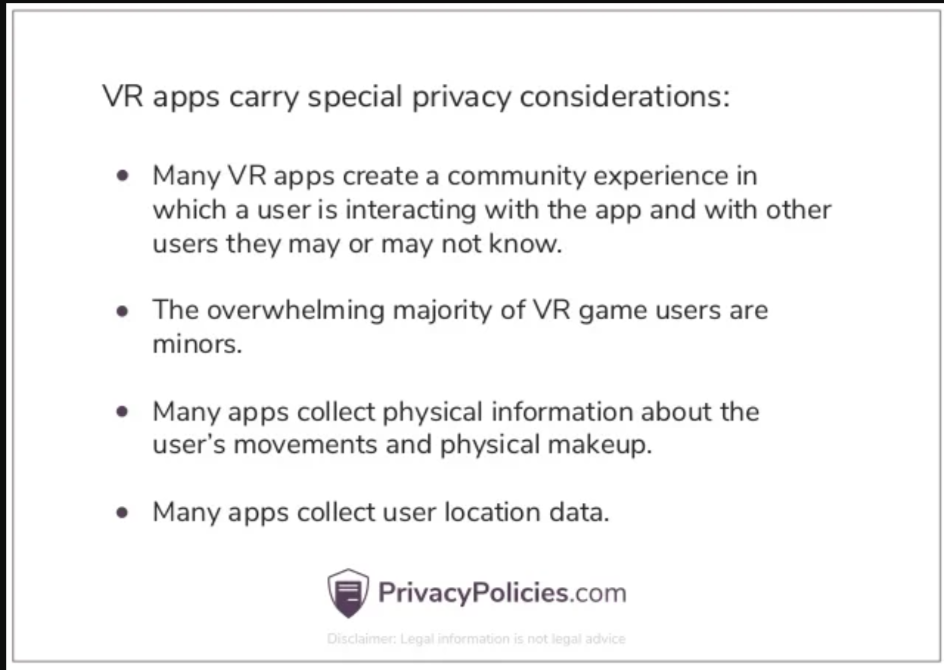Virtual reality (VR) has emerged as an exciting and immersive technology with the potential to revolutionize various fields. However, when it comes to young children, particularly those under the age of 12, there are significant concerns about the suitability of VR.
Experts and researchers have highlighted several critical factors that parents and caregivers should consider before allowing young children to engage with VR.
In this article, we will explore the reasons why VR is not recommended for children under 12, taking into account expert opinions and research findings. Let’s delve into the topic and understand the potential risks associated with VR for young children.
1. Insufficient Safeguards and Exposure to Inappropriate Content
One of the significant concerns regarding VR is the lack of sufficient safeguards to protect young children from exposure to inappropriate content.
A report raises alarms about Meta’s virtual reality technology, highlighting insufficient safety measures that expose children to explicit content and abusive behavior.
The presence of explicit content in VR environments can have detrimental effects on the impressionable minds of young children.
2. Privacy Issues and Data Collection
VR experiences often involve the collection of user data, including personal information and behavioral patterns. This raises concerns about privacy issues, as children may unknowingly share sensitive data while engaging with VR platforms.
The potential misuse or mishandling of this data poses significant risks to children’s privacy and security.

3. Potential for Addiction and Aggression
The immersive nature of VR can lead to addictive behaviors, particularly among young children. Excessive usage of VR devices may interfere with their daily routines, social interactions, and overall well-being.
Moreover, some studies suggest a correlation between violent video games and aggression. The incorporation of violent elements in certain VR experiences raises concerns about potential negative behavioral impacts on young children.
4. Lack of Understanding and Differentiating Reality
Children under 12 may face challenges in understanding and differentiating between virtual and real-world experiences. This blurring of boundaries can affect their cognitive development and ability to distinguish between fiction and reality.
It becomes crucial to ensure that children can comprehend the distinction and process their virtual experiences appropriately.
5. Long-Term Health Effects and Brain Development
The long-term health effects of VR on children, especially regarding brain development, remain uncertain. A Standford research indicates differences in brain activity between virtual and real environments.
Prolonged exposure to ill-fitted VR devices and the potential impact on brain development raise concerns. Additionally, the effects of VR on children’s eyesight, including the risk of headaches and eyestrain, need further investigation.
6. Challenges in Supervision and Limited Session Durations
Supervising young children while they engage with VR can be challenging. The need for constant monitoring to ensure their safety and well-being places an additional burden on parents and caregivers.
Furthermore, limiting session durations is crucial to prevent potential negative effects, such as:
- Simulator sickness
- Headaches
- Dizziness
- Disorientation
7. Recommendations and Industry Accountability
To address the concerns associated with VR for children under 12, it is essential for the industry to take responsibility and establish suitable safety measures. Manufacturers should prioritize child safety by implementing age restrictions, robust content moderation, and parental control features.
Collaborative efforts between the industry, experts, and regulators can lead to the development of comprehensive guidelines and standards.
8. Collaboration for Child Safety in Virtual Environments
Protecting children and teens in virtual environments requires collaboration between parents, industry stakeholders, and government regulators. While parental guidance is essential, relying solely on parents to ensure child safety is not sufficient.
Industry accountability and government regulation are crucial to establish a safer and more secure VR ecosystem for young users.
Conclusion
In conclusion, virtual reality can offer remarkable experiences, but it is not suitable for children under 12. The risks associated with insufficient safeguards, exposure to inappropriate content, privacy issues, potential addiction, challenges in differentiating reality, and uncertainties about long-term health effects require careful consideration.
Parents and caregivers should exercise caution and make informed decisions regarding young children’s engagement with VR technology.
Click here for a similar article on VR: The risks and benefits.
FAQs
Q1: Can VR have any positive effects on children under 12?
While VR has the potential for positive effects, such as enhanced learning and empathy development, the risks and challenges outweigh the potential benefits for children under 12.
Q2: Are there any VR devices specifically designed for children?
Some VR devices are marketed for children, but it is crucial to assess their safety features, age restrictions, and content moderation before allowing children to use them.
Q3: What steps can parents take to ensure child safety while using VR?
Parents should closely monitor their children’s VR usage, limit session durations, select age-appropriate content, and prioritize open communication about virtual experiences.
Q4: Are there any ongoing research efforts to study the effects of VR on children?
Researchers and institutions continue to explore the impact of VR on children’s well-being. Ongoing studies aim to provide further insights into the long-term effects and potential benefits of VR for young users.
Q5: What role does parental guidance play in children’s VR experiences?
Parental guidance is crucial in helping children understand and navigate virtual experiences responsibly. Open conversations, setting boundaries, and monitoring usage are key aspects of effective parental guidance.